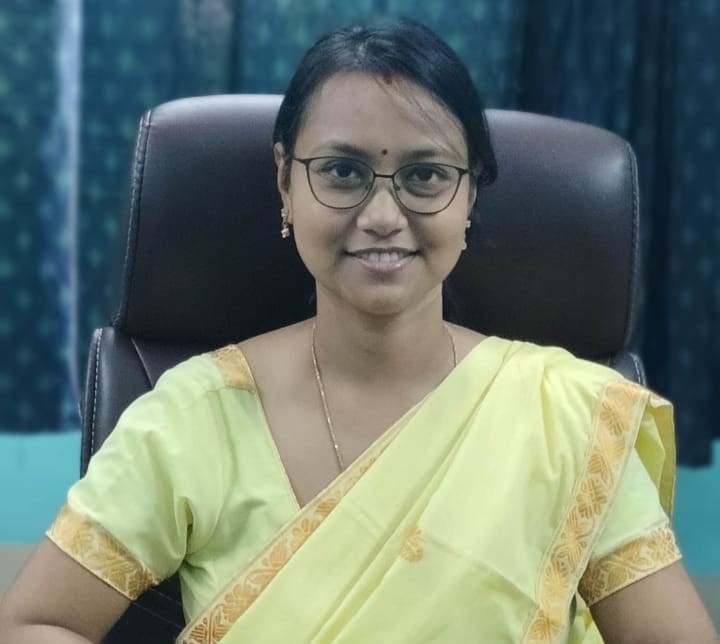-
River Bank Erosion and its Counter Measures
-
Local Scour of Bridge Pier in Cohesive Soil
-
Startup Centre
The Department of Civil Engineering started in 1977 and has been imparting quality education to undergraduate and postgraduate students ever since. The Department presently fosters one UG program, five PG programs, and research programmes that lead to doctoral degrees. It has a well-experienced faculty, skilled technical staff and well-equipped laboratories. The faculty consists of eminent specialists from diverse fields, and the department has a commendable research ambience. The Department aims to provide quality education, research, and professional experiences that enable its graduates to become leaders in their professional careers, pursue excellence in research to serve the profession, community, and nation, and be competitive in the international scene.
Our Vision
The vision of the Department of Civil Engineering is to achieve unique identity by development of knowledge resources and highly competent Civil Engineers in various fields of Civil Engineering to meet local, national, and global economic and social needs.
The mission of the Department of Civil Engineering is to create knowledge resources and to educate and train youths in the latest technologies in Civil Engineering, to imbibe in them human values, self confidence and independent thinking in tackling diverse problems in the field of Civil Engineering so that they can serve the country and the human society at large.
Our Mission
Important Notice
Academics & Program

Undergraduate
The B.Tech. programme consists of eight semesters and is a professional engineering degree affiliated with and awarded after completion of 4-years of extensive engineering study and research. Civil engineering students will learn about basic engineering techniques, as other engineering students, during first-year courses, which include Engineering Mathematics, Physics, Chemistry, Electrical Engineering, Electronics Engineering, Engineering Mechanics, Mechanical Activities (Welding, Fitting, Carpentry, etc.), Engineering Graphics and Design, Environmental Science and Basic Programming. From the second year, they are exposed to core civil engineering subjects like structural engineering, geotechnical engineering, water resources engineering, environmental engineering, transportation engineering, earthquake engineering, and costing & estimation, to mention a few. This programme is one of the most popular core and demanded branches, not only in India but also around the world.
Postgraduate
The M.Tech. programme in Civil Engineering provides advanced knowledge in various areas of Civil engineering. The programme is designed so that a student can complete it based on advanced coursework alone. However, the students are given the option to concentrate on a problem by substituting some of the courses with equivalent project work. The standard M. Tech. is a two-year programme in which the first two semesters are spent doing courses. A one-year project commences at the end of the 2nd semester. The project typically has a strong research component. The department presently fosters five M. Tech. programmes.

Doctor Of Philosophy (Ph. D.)
The PhD programme is a post-graduate programme focused on original research that can lead to publications in premier conferences or journals. It is the highest level of degree that a student can achieve. Students are required to do some courses in the first few semesters (course work required can vary based on a student’s background) but soon move on completely to research. Many Ph.D. scholars teach B.Tech. tutorial classes and many labs as teaching assistants. After completing the programme, the scholar is capable of understanding significant particulars of civil engineering.
Faculty Advisors
Satyabrata Choudhury
ProfessorPhone: 9957182389
Email: scnitsilchar@gmail.com
Satyabrata Choudhury
ProfessorPhone: 9957182389
Email: scnitsilchar@gmail.com
Satyabrata Choudhury
ProfessorPhone: 9957182389
Email: scnitsilchar@gmail.com
Satyabrata Choudhury
ProfessorPhone: 9957182389
Email: scnitsilchar@gmail.com
Sponsored Projects

Faculty Members
Head of the Department
Welcome to the Department of Civil Engineering, where innovation meets impact. As Head of the Department, I am proud to lead a passionate team committed to nurturing future-ready engineers through a dynamic blend of academic excellence, hands-on experience, and cutting-edge research. Our students engage with real-world challenges in state-of-the-art labs and industry-relevant projects, preparing them to design and build sustainable solutions that shape the nation. We invite you to explore our website and discover how we are building a better world.
Dr. Mokaddes Ali AhmedHoD, Department of Civil Engineering
Email: hod@civil.nits.ac.in

News and Updates



























































